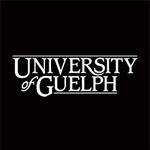My postcard: contemporary perspectives
Today, Loch Earn still exists as a popular tourist destination just east of the Trossachs National Park in Scotland (“Loch Earn,” n.d.). There are four nearby settlements: St Fillans, Lochearnhead, Balquhidder, and Strathyre; which are linked by a long trail featuring art installations (“Loch Earn,” n.d.). This trail, called “BLiSS”, is often used as a scenic drive along the River Earn or for walking and cycling in some sections (“Loch Earn,” n.d.). Nearby mountains, such as Ben Vorlich, provide hiking trails for a unique view of the scenery as well as the opportunity to see a variety of wildlife such as kingfishers, heron, peregrines, hawks, red deer and wild goats (“Loch Earn,” n.d.). Other popular activities in Loch Earn include canoeing, kayaking, golfing, fishing, and the annual Great Loch Earn Boat Race, which occurs in April (“Loch Earn,” n.d.).
The Robertson clan is now better known as “Clan Donnachaidh”. The main surname of this clan is still Robertson; however, there are now many other surnames associated with the clan including Reid, Duncan, MacWilliam, and Robson (“Official Site of,” n.d.). Clan Donnachaidh is currently on its 23rd chief, Alexander Gilbert Haldane Robertson of Struan, who celebrated his 35th year as chief in 2018 (“Official Site of,” n.d.). Once a year, the chief of Clan Donnachaidh calls a Clan Gathering to invite people from all over to meet him and his family, discuss the Society, and socialize with others of the same background (“Clan Donnachaidh Society,” 2019). As of November 2019, the Clan Donnachaidh Society has branches covering four continents: Africa, Europe, North America and Oceania; with two of these branches being in Canada (“Official Site of,” n.d.). The society also has a DNA project, which attempts to confirm family trees, reveal more about clan history, determine which ancestral lines are related and discover points of origin in clan surnames (“Official Site of,” n.d.).
The University of Guelph Archives and Special Collections acquired this postcard for $6. This may seem like a significant sum to pay for an old, used postcard, but when you take historical value into account this postcard is worth so much more than $6. As I’ve explored in this exhibit, ephemera can be far more than a collectable item: it can show a unique, honest perspective on the customs of society during important periods in history.

